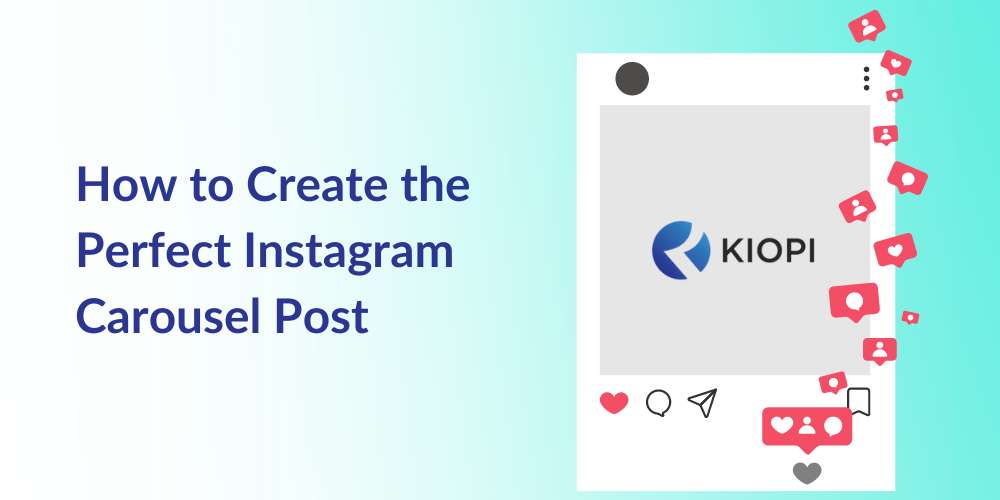
Social Media Advertising
Kristyn Miller
Table of Contents
By now, you probably already know that having an active online presence is a crucial part of any business marketing strategy. However, while posting consistent content and regularly interacting with your audience is important for your brand, the truth is that reaching potential customers is becoming increasingly difficult to achieve organically. As such, sometimes it may be necessary to put a little money behind your efforts to ensure they reach the eyes they are intended to.
In this post, our social media management experts at Kiopi will explain to you the importance of social media advertising and why you should consider implementing it to give your business the boost it needs.
What are the Benefits of Advertising on Social Media?
The capacity to bring in new clients quickly and consistently is critical for businesses in today’s world. Even if you don’t make a profit on the first transaction, things like referrals, email marketing, and customer retention can significantly pay off in the long run. That’s what makes digital marketing through social media so different from traditional advertising: the ability to capture a target audience’s attention almost immediately and, if done correctly, retain it.
There are a number of other benefits that come with advertising on social media, including things like improved brand recognition and loyalty among consumers, reduced marketing costs, and increased foot traffic. It also helps improve your search engine ranking and allows for easier consumer-to-brand communications. With all of these benefits and more, anyone who isn’t already implementing social media advertising is missing out on an incredibly beneficial and cost-effective marketing opportunity.
Want to know the differences between paid and organic strategies? We dive into that here: Social Media Ads vs Marketing.
How to Advertise on Social Media
Nearly all of the major social media networks provide businesses the opportunity to advertise their products and services. When choosing which platforms to utilize for your marketing efforts, it’s important that you first conduct an audience analysis to determine 1.) what your target audience looks like, 2.) what platform they are most likely to be on, and 3.) when they are likely to be there. By taking advantage of this information, you can begin creating targeted strategies to ensure the best outcome for your advertisements.
To begin taking advantage of the benefits of social media advertising, simply create a business account on the platform you intend to use if you have not already. We recommend utilizing “The Big 3” social platforms, which include Facebook, Instagram, and Twitter. With a considerable amount of daily traffic and great advertisement methods available to you, we find these social media networks to be the most effective for running a successful ad campaign. We’ll explain how advertising works for each of these platforms below.
Facebook Advertising
With 2.45 billion monthly active users, Facebook is incredibly popular among a wide variety of demographics, ranging from teenagers to seniors. Posting to Facebook is a great way to begin your social media advertising efforts, as it offers simple yet comprehensive targeting choices for virtually every type of audience. What’s more, Facebook offers a variety of sponsored ad options that help you achieve your specific campaign objective, whether that be generating awareness, consideration, or conversion.
Depending on your goal, you may choose from a plethora of ad formats, including:
- Image ads
- Video ads
- Poll ads
- Slideshow ads
- Carousel ads
- Lead ads
- Stories ads
- Collection ads
- Instant Experience ads>
- Messenger ads
- Dynamic ads
- Augmented Reality ads
Check out our blog on Facebook Advertising to learn more about these ad options and how to advertise your business on Facebook.
Instagram Advertising
Posting to Instagram is one of the most rewarding way to advertise and market your business. What was once predominantly a mobile photo-sharing platform has since evolved into a hub for all kinds of business relations. The application has developed several tools that assist in Instagram advertising and marketing since its inception, including paid ads and organic posts.
Due to the fact that Facebook owns Instagram, it should come as no surprise that the two platforms share the same campaign objectives: awareness, consideration, and conversion. The objective of awareness helps increase a brand’s reach by building brand recognition. Consideration can help increase engagement, generate leads, encourage app installs, and help drive traffic to your website, among other things. Finally, conversion aids in boosting sales and turning visitors into paying customers.
You may choose to place your ads on Instagram’s main feed, Stories, Reels, or IGTV.
Twitter Advertising
With its algorithm constantly refreshing and hundreds of millions of Tweets being published every day, it can be easy for your Twitter marketing efforts to get lost in the crowd. This is where Twitter advertisements come in. Businesses may utilize Twitter advertising to market their products and reach out to new customers who might be interested in their products or services.
Given the several Twitter ad forms available (and the fact that there is no minimum advertising budget), posting to Twitter via Twitter Ads might be a great first step into the world of social media advertising.
Twitter allows you to create your own ad campaigns depending on your marketing goals, which by the way, are the same as those offered on Facebook and Instagram (awareness, consideration, and conversion). You may also choose from several different ad formats, including:
- Promoted Tweets
- Promoted accounts
- Promoted trends
- Promoted moments
- Automated ads
Social Media Advertising Tips
It’s clear that social media advertising is a critical component of marketing success, and many marketers recognize the potential it provides for substantial business growth. However, while the importance of social media advertising is clear, the methods used and whether or not they are beneficial aren’t always as apparent. Below, we’ve provided some helpful social media advertising tips that can guide you in your marketing journey.
1. Define Your Goals
Before you do anything, it’s crucial that you know what your company’s goals are. This guarantees that you select the appropriate social media network for your ad campaign and the best advertising solution within that platform. It can even help you in planning your creative strategy. To define your goal, begin by writing down all of your objectives and how you will measure your success in obtaining these objectives. The more detailed your goals are, the more effective they will be. Be sure to choose a goal that is attainable and easy to measure.
2. Know Your Audience
User information provides social media platforms with the ability to create highly relevant adverts based on user interactions within that platform. When users match your target audience’s demographics, the use of effective social media advertising can lead to a higher conversion rate at a cheaper cost of acquisition.
In addition, when you learn about your audience, which essentially entails your followers and the potential customers you wish to target, you’ll be able to create content that speaks directly to them, increasing their likelihood of engaging with your content. It is important that you think of them as real people with specific desires, needs, and expectations. This can make it a lot easier to interact with followers on social media and hopefully convert those followers into paying customers.
3. Choose an Objective
In order to get the most out of your marketing budget, you need to consider what you want your main objective to be. This feeds back into defining your goals, but becomes more tangible when you actually have to make a selection between building awareness, consideration, or conversion. All you have to do is pick the one that best aligns with your business goals so that you’re only paying for the results you want. After all, you don’t want to spend money on engagements that aren’t related to your company’s objectives. With this in mind, your ad’s phrasing should make it clear if it’s intended for them or not.
4. Make Creative Content
Even by paying for your content to reach a larger audience, all that does is put it in front of the target audience’s eyes. If you want your investment to pay off and your audience to actually engage with your content and your brand, you need to create something that appeals to them. A good way to do this is to observe what organic posts of yours have done well in the past and restructure those, or even simply promote those existing posts, into an advertisement.
If you’re seeking new and unique content, using design tools such as Canva can be extremely beneficial. Canva has thousands of readily available templates curated from real graphic designers that can give you a head start in your content creation.
5. Utilize a Social Media Toolkit
When you’re managing multiple different social platforms and manually posting on each of them, things can get overwhelming pretty quickly. By taking advantage of the many helpful social media tools that are out there, you may be able to automate as much of your activity as possible and save yourself loads of time in the process. We recommend incorporating the following tools into your social media toolkit:
- Social media analytics tool
- Social media content calendar
- Social media scheduling tool
- Link shortener tool
- Campaign management tool
6. Post Consistently
When it comes to implementing a successful advertising plan, it’s critical to produce high-quality content as well as to figure out a good posting frequency. Find a time that best represents your target audience’s online activity and then adhere to that time. The best way to ensure that your social media advertisements appear where they need to be and when they need to be there is to utilize a social media scheduling tool like Kiopi. Kiopi allows you to plan, schedule, and post consistent content that promotes consumer engagement, all from one place.
7. Measure Results
A significant aspect of establishing ROI is measuring your outcomes and having real statistics regarding the value that your advertisements provide for your business.
Without a way to analyze the metrics of your ads, how will you know how well they performed and if they met your initial goals and objectives?
Using an analytics tool can help measure your performance and reveal what worked and what didn’t. That way, you can use this information gathered from social measuring to improve upon your ad campaigns in the future.
Make the Most of Your Advertising Efforts With the Help of Kiopi
In the fast-paced world of digital marketing, it’s important to keep up with the latest trends and know what it takes to optimize your advertising efforts to get the most bang for your budget. When you integrate useful tools such as Kiopi into your marketing strategy, you’re sure to put your best digital foot forward. Sign up for a free 14-day trial with Kiopi today and see how much easier social media management can be for you.
